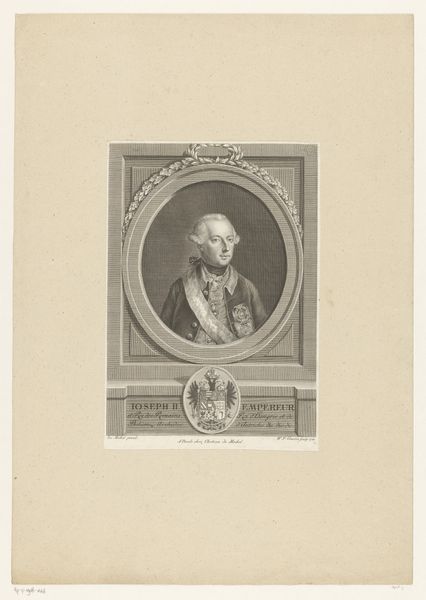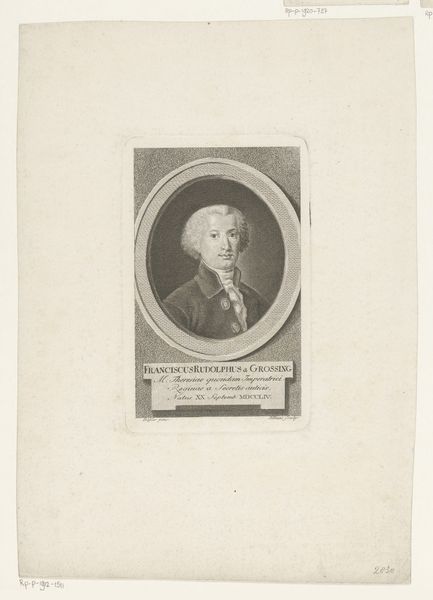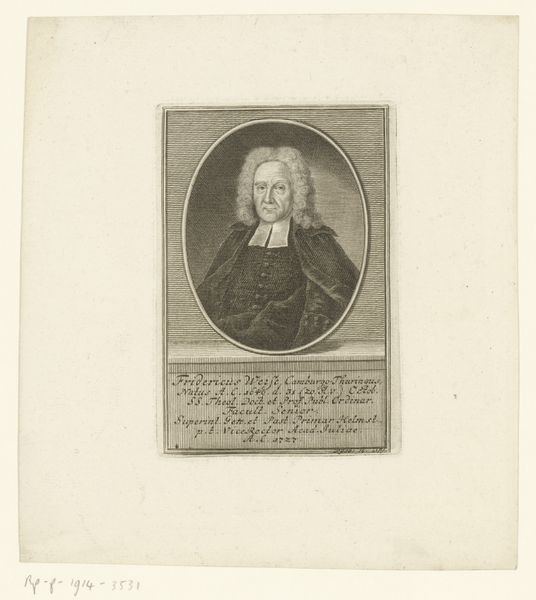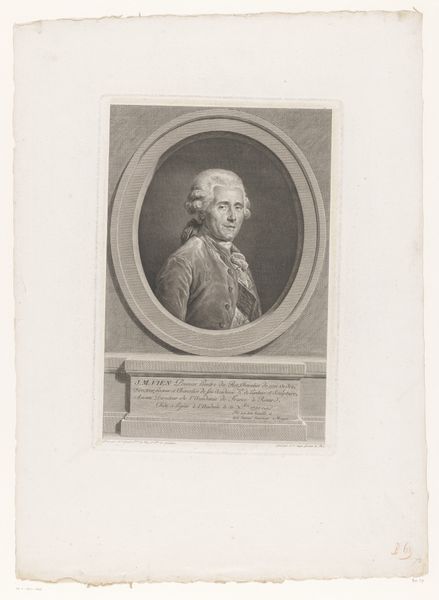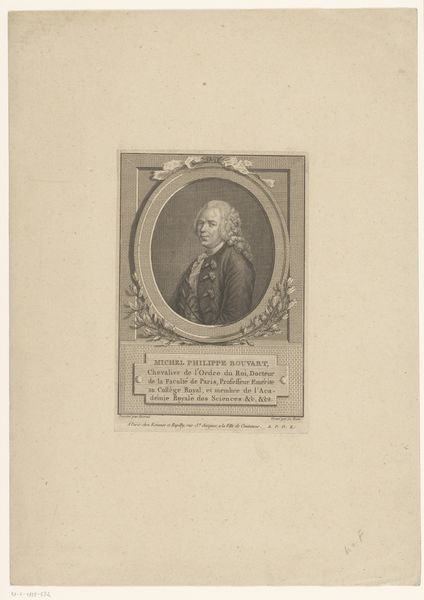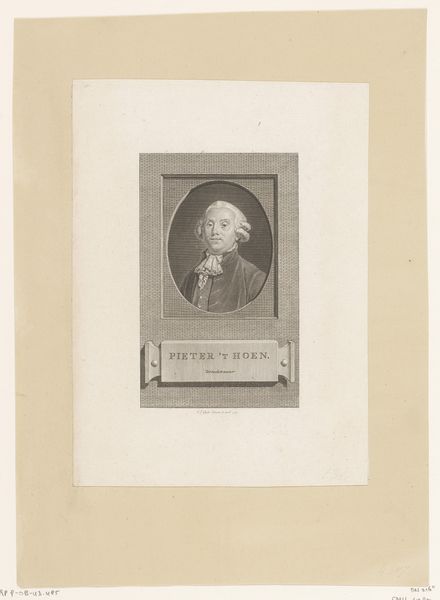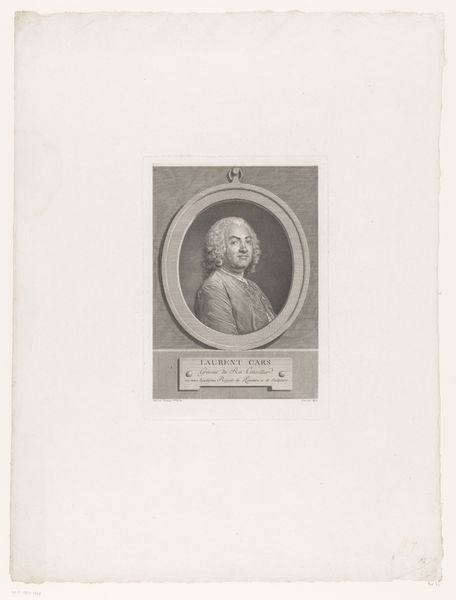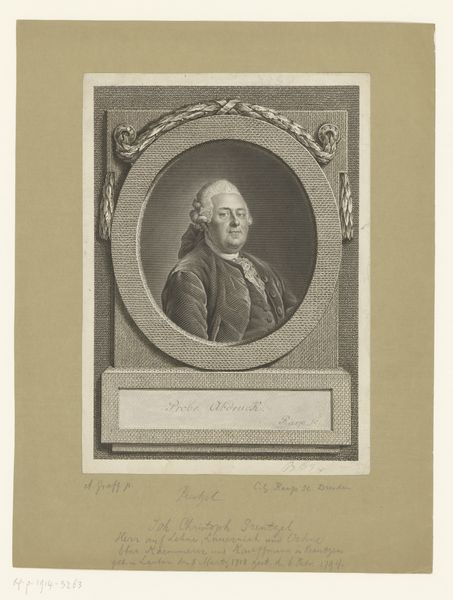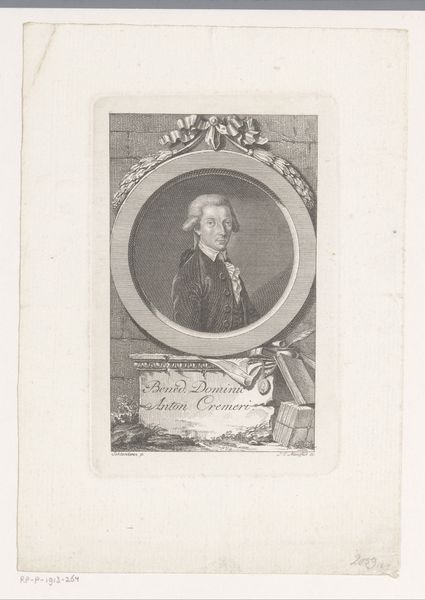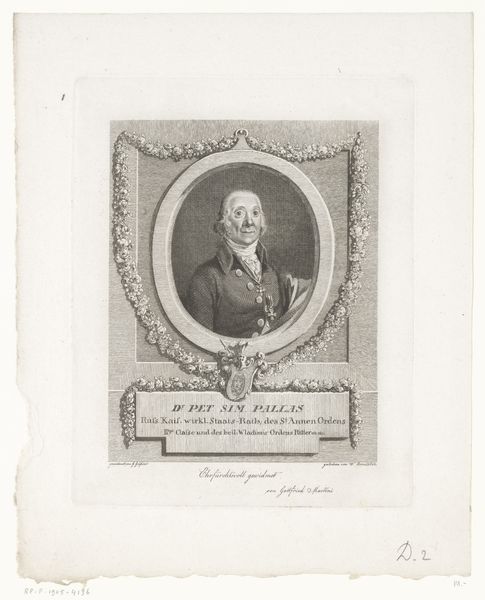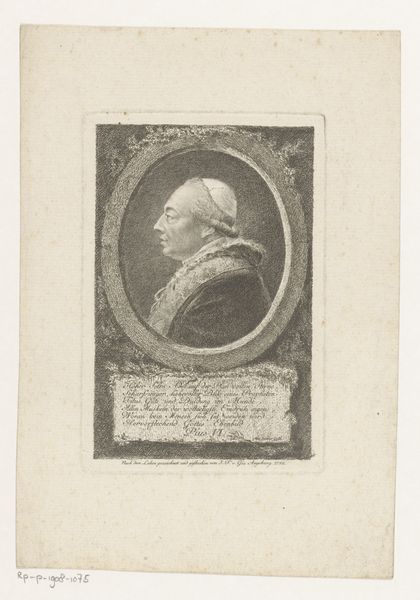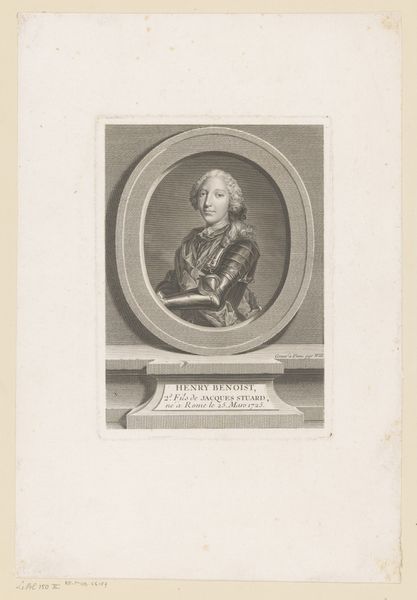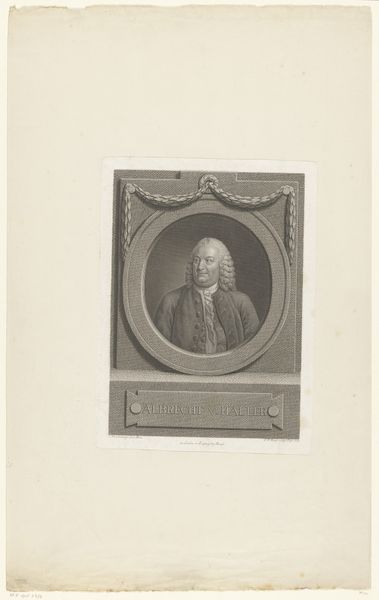
Dimensions: height 186 mm, width 126 mm
Copyright: Rijks Museum: Open Domain
Curator: Let’s discuss this engraving, "Portret van P.G. Sage," dating back to somewhere between 1754 and 1809 and residing here at the Rijksmuseum. It's a fascinating piece by François Hubert. Editor: My first thought? Order and quiet confidence. The oval framing creates a sense of intimacy, a window into the life of this individual. He appears contained and secure. Curator: Absolutely. Hubert was operating in a time heavily influenced by portraiture and history painting, and you can see elements of the baroque period informing its structure and style, particularly in the decorative flourishes around the central image. P.G. Sage, judging by the inscription, held positions in several learned societies. What kind of power dynamics might Hubert have been exploring by depicting Sage in this particular way? How might Sage’s position in society impact perceptions? Editor: It certainly invites that interrogation, doesn’t it? Given the man’s stature as part of elite academies across Europe, I suspect it’s playing into existing tropes about male intellectual authority. The inscription certainly underscores Sage’s connection to powerful institutions of knowledge, both affirming and perpetuating such an exclusive power structure. Curator: And the material itself--an engraving--suggests something too: wide distribution and replication were perhaps key intentions from the start, making it very different from a singular painted portrait hanging in someone's home. Who was the intended audience for these reproductions, and what ideas and beliefs about scientific authority were being disseminated through its wide distribution? Editor: A vital question! Did this imagery challenge or reinforce specific class or gender norms of that era? What impact might it have on someone marginalized in those very spaces that Sage held membership in? A constant awareness of the image’s influence in and beyond the art world is paramount for an ethical consideration. Curator: Precisely. By investigating the political undertones within apparently traditional works, we gain essential perspective not only on the period in which Hubert operated, but hopefully insight on our own world, too. Editor: Definitely. Even an image as simple as this encourages us to confront questions of legacy, knowledge, and power across time.
Comments
No comments
Be the first to comment and join the conversation on the ultimate creative platform.
